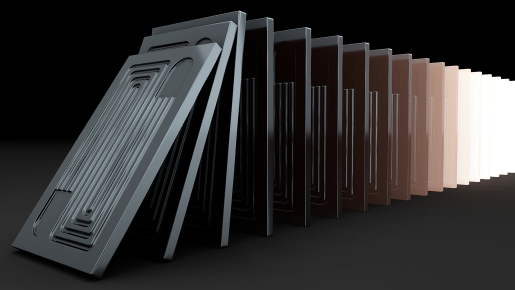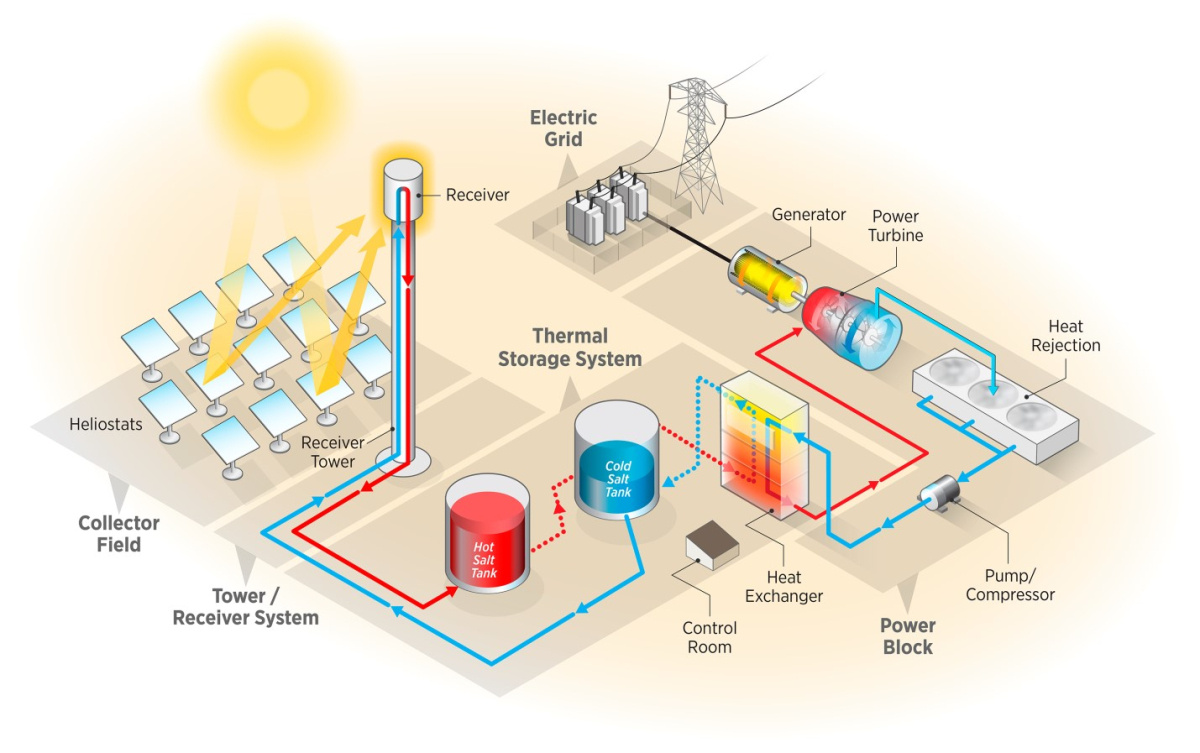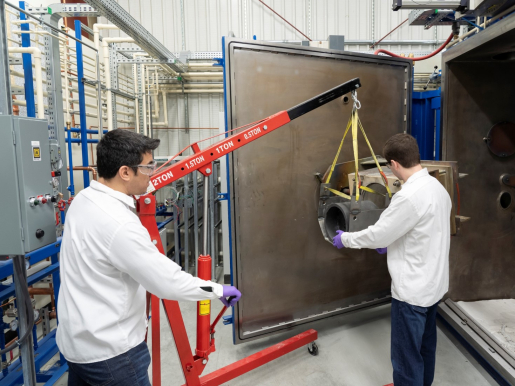A new metal composite for heat exchangers could improve energy conversion and cut costs in CSP plants.
February 6, 2019A team of researchers led by Purdue University announced the invention of a new composite material, cermet, which can improve the energy conversion in concentrating solar-thermal power (CSP) plant systems. The cermet, a combination of the ceramic zirconium carbide and the metal tungsten, and a new manufacturing process for the material have been under development since 2015 with support from the U.S. Department of Energy Solar Energy Technologies Office.
CSP plants collect energy during the day and store it as heat in a medium, like molten salt, until it is used to drive a turbine and generate electricity. A heat exchanger transfers energy from the salt to the turbine’s high-pressure working fluid—either steam at 565° Celsius for current plants or supercritical carbon dioxide (sCO2) at over 700°C for next-generation plants. Today’s heat exchangers are made from stainless steel and nickel-based alloys, which soften under high pressure. Maintaining the strength needed to withstand the high pressure would require thicker walls, but that uses more material, which increases costs.
The cermet is formed into plates stacked inside a heat exchanger that can conduct two to three times more heat than conventional alloys. These plates could help to increase the relative heat-to-electricity conversion efficiency of CSP plants by more than 20%, from about 41% at the current system operation of 565°C to 50% or higher at over 700°C, lowering the cost of generating electricity.
In Purdue’s design, the plates are stacked on top of each other, bonded together, and connected to tubes where the molten salt and sCO2 enter and exit the heat exchanger. Each plate has customizable channels to optimize the transfer of heat from the molten salt to the sCO2. The hotter the salt and sCO2, the more electricity the CSP plant can generate from the same amount of sunlight. The team discovered that adding a little carbon monoxide to the sCO2 and a bonding layer of copper to the plates helps prevent corrosion from the high operating temperatures and pressures of sCO2.
Purdue’s manufacturing process starts with porous tungsten carbide, which is easily formed into patterned plates that are then submerged in a hot liquid solution of zirconium and copper. The plates soak up the solution, initiating a chemical reaction that makes a dense, strong cermet. The team also developed a techno-economic model, revealing the cost of manufacturing these plates can be comparable to manufacturing steel and nickel alloy plates. Coupled with the heat-to-electricity efficiency gains, this process would be key to achieving cost targets that could enable cost-effective CSP plants in the United States.
Purdue’s research team filed patents in 2016 for the manufacturing of the corrosion-resistant material and published the results of their research through Nature in October 2018. In May 2018, the Solar Energy Technologies Office selected the Purdue research team to receiving funding through the Generation 3 Concentrating Solar Power Systems program, which seeks to advance high-temperature CSP components and integrated assembly designs with thermal energy storage, so they can further develop a small, cost-effective heat exchanger using their developed cermet material.
Learn more about SETO’s concentrating solar-thermal power research.




